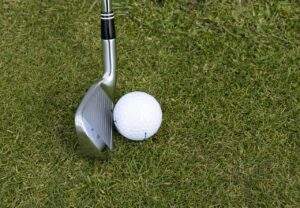How Olympic Barbell in Canada Shapes Athletes?
Are you an aspiring athlete looking to enhance your strength, power, and overall performance? If yes, the Olympic barbell is a necessary piece of equipment that can help you achieve your goals. In Canada, the Olympic barbell has gained immense popularity among athletes of all levels. This article explores the impact of Olympic barbells on athletes, highlighting their benefits, training techniques, and success stories. So, let’s dive in and discover how the Olympic barbell shapes athletes in Canada.
Introduction: Unleashing Athletic Potential
Athletes are constantly striving to reach their full potential and surpass their limits. In pursuit of greatness, they require equipment that can push their boundaries and optimize their performance. An Olympic barbell is a fundamental tool in strength training, powerlifting, and Olympic weightlifting disciplines. In Canada, athletes have recognized the importance of this versatile equipment and its ability to shape their athletic abilities.
Understanding the Olympic Barbell
The Olympic barbell is a specialized type of weightlifting bar designed to meet the standards set by the International Weightlifting Federation (IWF). It consists of a long, steel bar with rotating sleeves on each end, allowing weight plates to be added. The standard weight of an Olympic barbell is 20 kilograms for men and 15 kilograms for women, although variations exist to accommodate different training needs. Olympic barbells are engineered to withstand heavy loads and provide optimal grip and stability during lifts.
Benefits of Training with Olympic Barbells
Training with Olympic barbells offers a plethora of benefits for athletes. Let’s delve into the details of these benefits, including bullet points for clarity:
Full-Body Strength Development: Olympic barbell training engages major muscle groups throughout the body, leading to comprehensive strength development. Some specific benefits include:
- Increased muscular strength in the legs, back, and core.
- Enhanced upper body strength, including the shoulders, arms, and chest.
- Improved grip strength due to the demands of holding and controlling the barbell.
Power and Explosiveness: The dynamic movements involved in Olympic barbell exercises promote the development of power and explosiveness. This leads to several advantages, such as:
- Greater ability to generate force quickly, which is crucial for explosive movements like jumping and sprinting.
- Improved performance in sports that require rapid acceleration or quick changes in direction.
- Enhanced athletic performance in activities that involve explosive power, such as throwing or striking.
Muscle Fiber Activation: Olympic barbell training activates a large number of muscle fibers simultaneously, contributing to optimal muscle development. This results in:
- Increased muscle size and definition.
- Improved muscle tone and overall aesthetics.
- Enhanced muscle recruitment and coordination, leading to improved movement efficiency.
Functional Strength: Olympic barbell exercises mimic real-life movements and promote functional strength that translates to everyday activities and sports performance. Notable benefits include:
- Enhanced stability and balance, which can reduce the risk of falls and injuries.
- Improved posture and body mechanics, leading to better movement patterns and reduced risk of musculoskeletal imbalances.
- Increased overall strength and endurance, aiding in the completion of physical tasks with ease.
How to Choose the Right Olympic Barbell
Selecting the right Olympic barbell is vital for optimal training. Factors to consider include the bar’s quality, weight capacity, and grip. Different barbells may have specific knurling patterns or coatings that affect the feel and grip during lifts. Athletes should also consider their training goals and the specific Olympic weightlifting movements they plan to focus on. Consulting with professionals or experienced lifters can help in making an informed decision.
The Role of Olympic Barbells in Different Sports
Olympic barbells play a significant role in enhancing athletic performance across various sports. In a nutshell, their impact can be summarized in the following key points:
Strength and Power: Olympic barbell training develops the strength and power required for explosive movements in sports like football, basketball, and track and field.
Improved Technique: The use of Olympic barbells helps athletes refine their lifting techniques, leading to better form and execution in sports-specific movements.
Muscular Endurance: Training with Olympic barbells enhances muscular endurance, enabling athletes to sustain high-intensity efforts throughout their respective sports.
Functional Movement: Olympic barbell exercises mimic real-life movements, improving functional strength and movement patterns applicable to various sports.
Injury Prevention: Properly executed Olympic barbell training can help strengthen muscles, tendons, and ligaments, reducing the risk of injuries in sports activities.
These benefits make Olympic barbells a valuable tool for athletes aiming to excel in their chosen sports.
Conclusion
The Olympic barbell has become an indispensable tool in shaping athletes in Canada. Its ability to develop strength, power, and explosiveness has made it a staple in training regimens across various sports. As athletes strive to unlock their full potential, the Olympic barbell stands as a reliable companion on their journey. With proper technique, dedication, and access to quality equipment, athletes can harness the transformative power of Olympic barbells to excel in their chosen disciplines.







